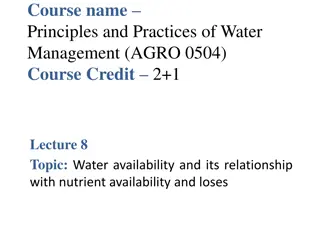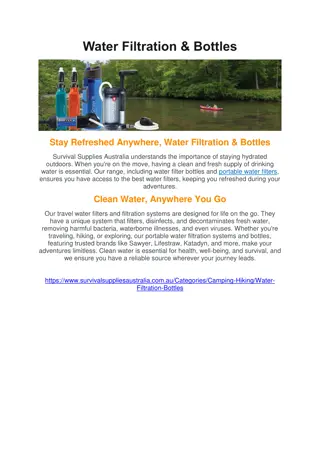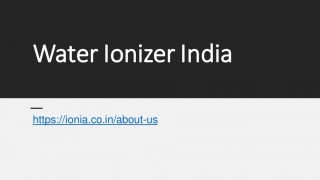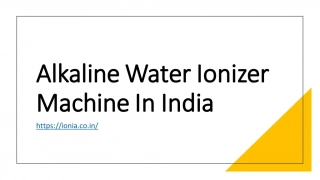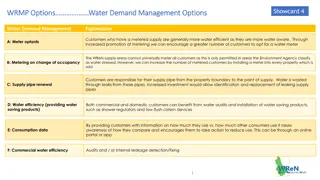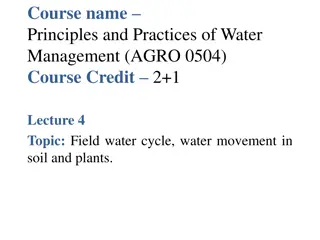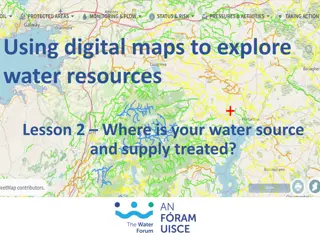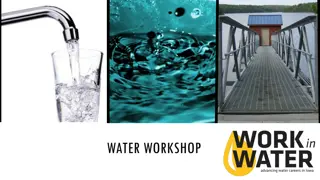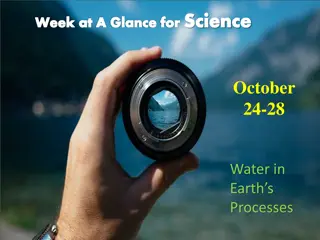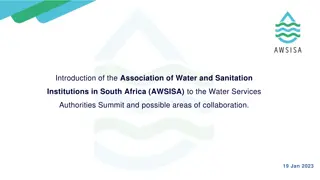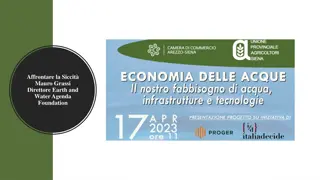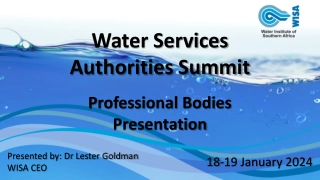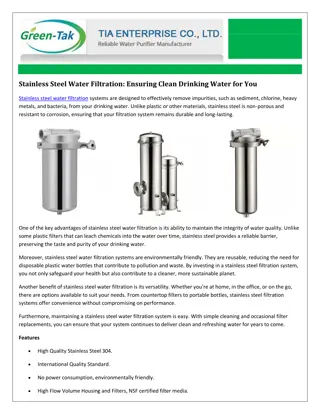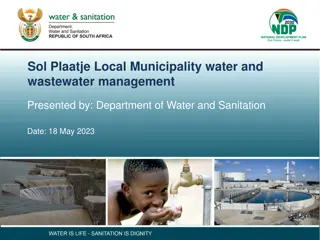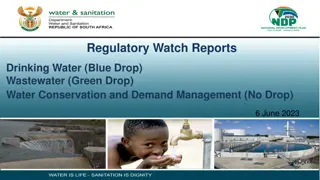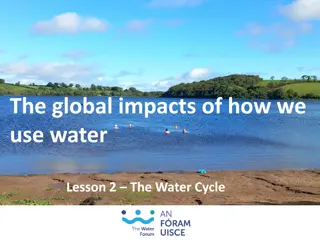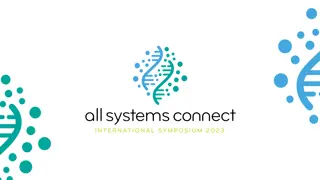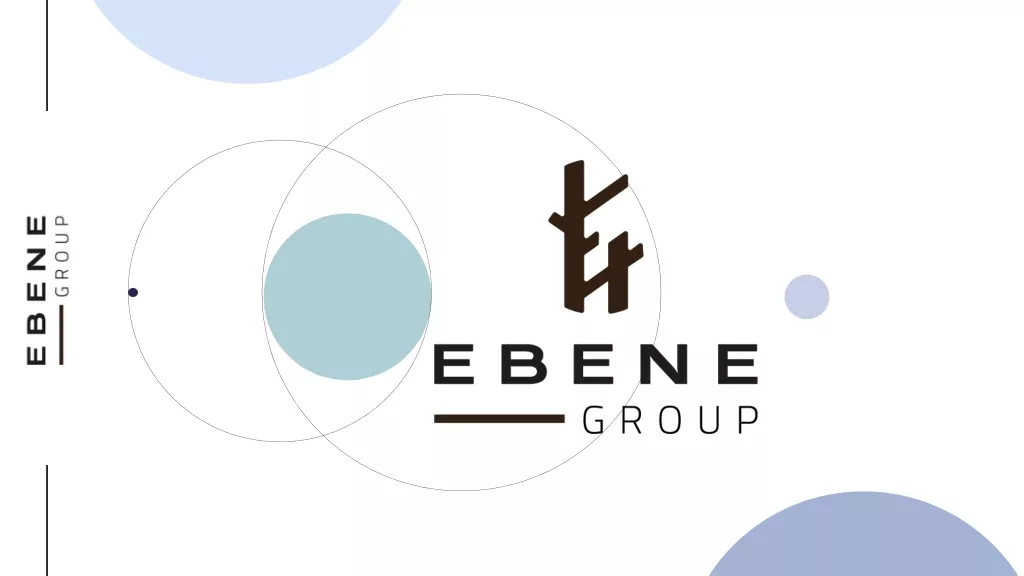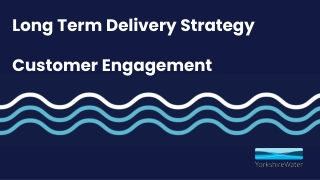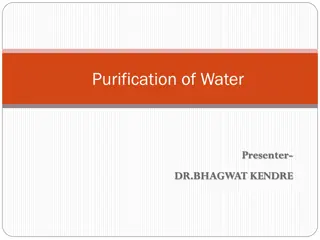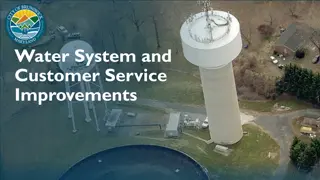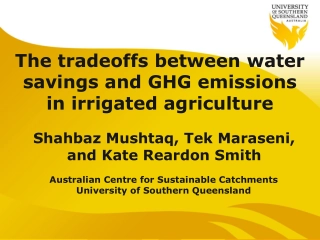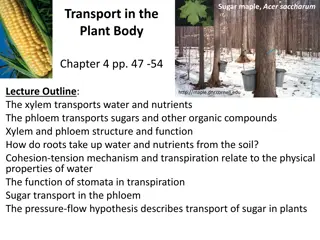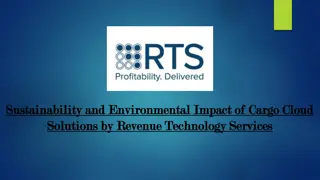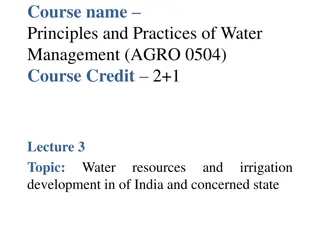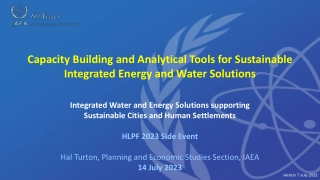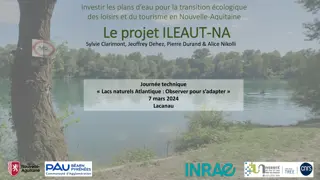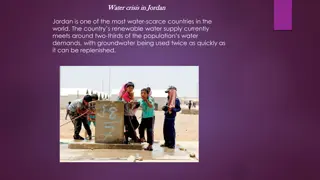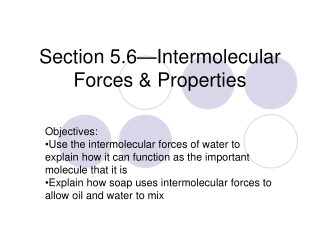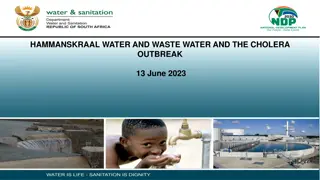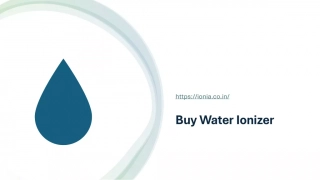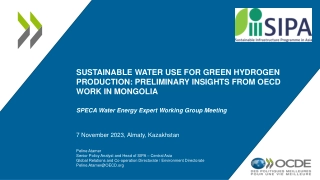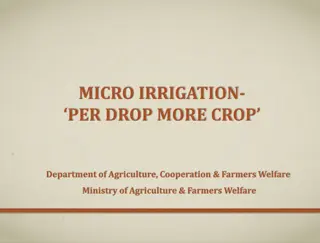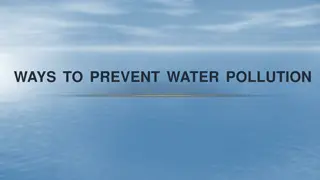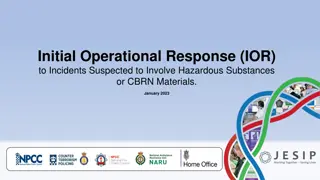Understanding Water Footprints: Impact and Awareness
Water is essential for all life, but our water footprint measures the hidden amount of water used to produce goods and services. This includes green, blue, and grey water footprints, as well as direct vs. indirect water consumption. Products like beef, cotton, and chocolate have high virtual water footprints, highlighting the importance of understanding and reducing water usage in everyday items.
Understanding Water Footprints: Impact and Awareness
PowerPoint presentation about 'Understanding Water Footprints: Impact and Awareness'. This presentation describes the topic on Water is essential for all life, but our water footprint measures the hidden amount of water used to produce goods and services. This includes green, blue, and grey water footprints, as well as direct vs. indirect water consumption. Products like beef, cotton, and chocolate have high virtual water footprints, highlighting the importance of understanding and reducing water usage in everyday items.. Download this presentation absolutely free.
Presentation Transcript
Chapter 1: Water is Essential for All Life The global impact of how we use water Lesson 3 Water Footprint
Our water footprint The water footprint measures the amount of water used to produce each of the goods and services we use. Water Everything we use, wear, buy, sell and eat takes water to make it.
Understanding the human impact on water (123) Where is Water? - The Water Rooms #2 YouTube (5:27min)
A water footprint has three components Water The water from rain/precipitation stored in the root zone of the soil for plant uptake. Green water footprint The water from surface water bodies, i.e. lakes and rivers, and groundwater. Blue water footprint The amount of fresh water needed to clean and dilute pollutants from production processes to meet water quality standards. Grey water footprint
Water Task 3.1 Write an explanation in your notebook for: Green Water Blue Water
Direct and Indirect Water Consumption Water Real / Direct / Visible Water consumption Water we directly use for drinking, cooking, flushing, washing domestic consumption Average European person uses 140 l/day Average American person uses 300 l/day Virtual / Indirect / Invisible Water consumption Water used to produce what we eat, wear and use Food - 3500 l/day Task 3.2
Water Beef has a large virtual footprint ~15000 litres of water is used produce 1kg (4 hamburgers)
Cottons virtual footprint Water Water It takes 2700 litres of water to produce one cotton T-shirt Where is cotton grown and where are cotton t-shirts are made?
Water Chocolate 17000 litres of water is used produce 1kg of chocolate (grow, process and transport)
Calculating the footprint of products Water Go to: https://waterfootprint.org/en/resources/interactive-tools/product-gallery/ and calculate food water footprint Task 3.3
Calculating real water use at home Go to: https://www.water.ie/conservation/home/water-conservation-calculator/ to calculate your weekly household water use. How do you compare the national average? What changes can you make to reduce water wastage? Task 3.4
Water What can we do? Live sustainably & act responsibly Live a healthy life by having enough food, water and a safe home, while consciously minimising waste, respecting and protecting the environment, and producing less pollution. Think about how we can live well using less
Water Personal Water Conservation Tips Personal Water Conservation Tips Reduce showering time, turn the water off while applying soap and use low-flow shower heads. Aim to eat sustainable food and reduce consumption of those foods that require more water, e.g. meat. Support sustainable and local agriculture, cattle- production and fishing. Be responsible when buying of clothes and products. Minimise waste production.


